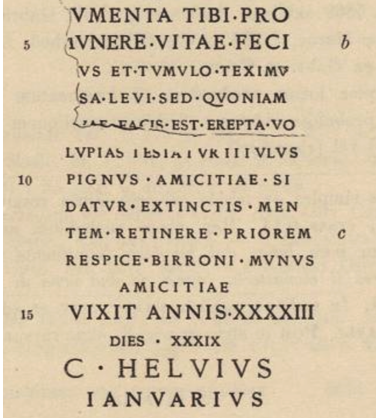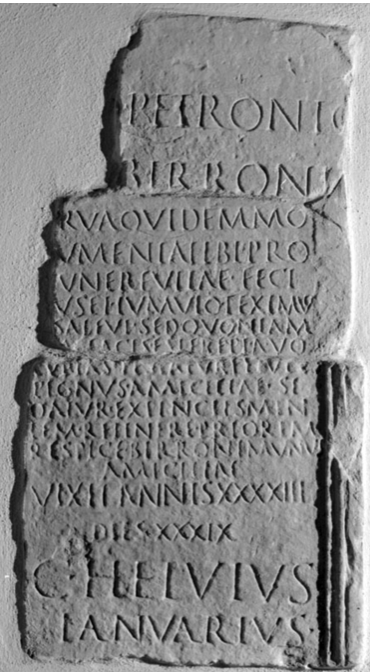39 CIL 11.5927


The arrangement and size of words in this inscription from Umbria play an important role in conveying its meaning. A prose frame embeds a six-line epigram (lines 2-9).
Q. Petronio / Birroni[o]. /
[P]arva quidem mo/[nu]menta tibi pro / munere vitae
feci/[m]us et tumulo teximus / [os]sa levi.
sed quoniam / [viv]a[e] facis est erepta vo/lup<t>as,
testatur titulus / pignus amicitiae.
si / datur extinctis men/tem retinere priorem, /
respice, Birroni, munus / amicitiae /
vixit annis XXXXIII, / die(bu)s XXXIX /
C. Helvius / Ianuarius.
Interrogata
- I. What role do repetitions play in the poem?
- II. What obligations does the inscription claim for Roman friendship?
Commentariolum
2 pro munere vitae: an obscure phrase, “in tribute to your life”. Note the repetition of munus at the end of the poem.
3 fecimus et… teximus: the plural verbs are a puzzle, since the inscription claims only one dedicator (Helvius). A “poetic” plural? Did others contribute to the monument but Helvius is assuming the lion’s share of the credit?
4 vivae facis: > fax, not facio, “living flame”.
7 munus amicitiae: reflect back to the use of this idiom in Martial 1.93.

